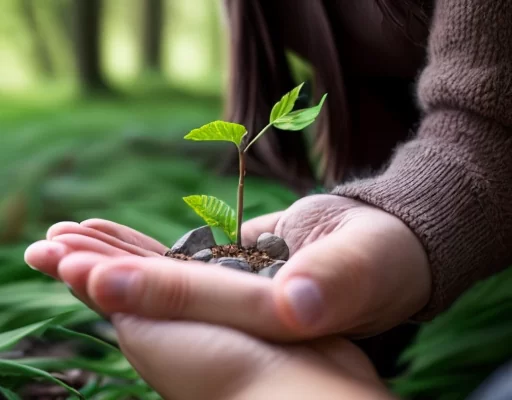
Teaching Children to Value and Respect Nature
“`html
Teaching Children to Value and Respect Nature
Nurturing a bond between children and the natural world is essential for their development and the future of our planet. This comprehensive guide will delve into the importance of teaching children to value and respect nature, and provide practical tips and activities to encourage this connection.
The Importance of Nature in Childhood Development
Children have an intrinsic curiosity about the living world around them. Exposure to nature not only fuels this curiosity but contributes significantly to their cognitive, emotional, and physical well-being. By learning to appreciate the environment, children develop empathy, resilience, and a sense of belonging.
Instilling Respect for Nature from a Young Age
Respect for nature begins at home. Encouraging children to engage with the outdoors, emphasizing the beauty, and explaining the role each organism plays in the ecosystem can spark a lifelong commitment to environmental stewardship.
Creating Daily Nature Routines
Daily routines such as walking, gardening, and outdoor play can cement nature as a regular part of a child’s life. These routines can help children understand the rhythms of nature and the importance of fresh air and sunshine for their health.
Incorporating Nature into Play and Education
Integrating nature-based play in a child’s routine encourages them to use their senses to explore and learn from their surroundings. Educational activities like identifying plants and animals can make this form of play both fun and instructive.
Exploring Local Natural Landmarks
Every community has its own natural wonders. Children can learn to appreciate the uniqueness of their local environment by visiting parks, forests, and beaches. This piques their interest in their own “backyard” and expands their understanding of the world.
Fostering a Garden to Table Philosophy
Teaching children to garden and grow their own food reconnects them with the source of their meals. This hands-on experience can instill a sense of responsibility and achievement while highlighting the importance of healthy eating and sustainable living.
Celebrating the Seasons and Wildlife
Each season brings new changes to the environment. Celebrating seasonal events and wildlife migrations can help children grasp the concept of change and renew within nature, making them more aware of the impermanence and fragility of natural systems.
Introducing Environmental Conservation
Teaching children about conservation efforts can show them the real-world impact of neglect and disrespect of nature. Initiatives like recycling campaigns, wildlife protection, and water conservation can empower them to make a difference.
Teaching Responsibility Through Eco-Friendly Practices
Simple practices such as reducing waste, conserving water, and using eco-friendly products can become part of daily life. These habits, taught early, can define a child’s lifestyle choices and their relationship with the environment.
The Role of Technology in Nature Education
Technology, when used appropriately, can be a powerful tool in nature education. Apps that aid in identifying plants and animals, or games that simulate environmental scenarios, can supplement outdoor experiences and deepen understanding.
Setting Boundaries with Screen Time
While technology can be beneficial, it’s important to balance screen time with outdoor activities. Creating boundaries ensures that technology supports, rather than replaces, actual nature experiences.
Modeling Eco-Friendly Behavior
Perhaps the most powerful tool in teaching respect for nature is leading by example. When children observe their caregivers living sustainably, they are more likely to adopt these behaviors themselves.
Participating in Community Environmental Efforts
Community projects such as beach clean-ups or tree planting can provide a communal sense of purpose and teach children about the power of collective action in protecting and respecting the environment.
Leveraging Books and Storytelling
Stories and books about nature and conservation can be captivating for children, planting the seeds of environmental consciousness through characters and narratives that highlight the value of the natural world.
Encouraging Mindfulness and Reflection
Nature is an excellent backdrop for teaching mindfulness. Encouraging children to observe, listen, and reflect on their surroundings teaches them to be present and fosters a deep appreciation for the subtleties of the natural environment.
The Benefits of Outdoor Educational Programs
Outdoor educational programs and camps offer structured experiences that combine learning with adventure. Such programs can play a significant role in a child’s nature education by providing expert guidance and a community of peers with similar interests.
Promoting Adventures and Exploration
Adventurous activities such as hiking, canoeing, or camping teach children to be comfortable with the unpredictability of nature. These experiences can inspire awe and highlight the importance of preparedness and respect in natural settings.
Overcoming Nature-Deficit Disorder
“Nature-deficit disorder,” a term coined by Richard Louv, is not a medical diagnosis but a way to describe the human costs of alienation from nature. By recognizing and addressing this deficit, we can ensure a healthier future for both our children and the planet.
Continuing Education and Eco-Friendly Activities at Home
Encouraging ongoing nature-related activities at home ensures that a child’s connection with the environment does not end with school. Resources like documentaries, DIY eco-crafts, and family nature clubs can fortify this bond.
In conclusion, by incorporating these strategies and fostering a love and respect for nature in our children, we lay the groundwork for a more sustainable future. It is through education, engagement, and empathy that we can hope to inspire the next generation of environmental stewards.
“`

